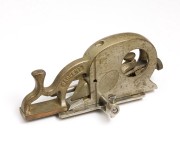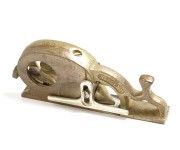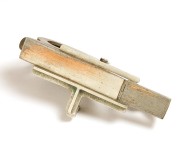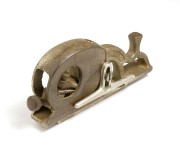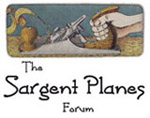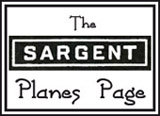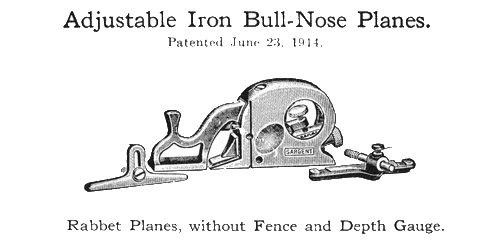
Sargent No. 1509½ Bull-Nose Rabbet Plane
as illustrated in the Sargent Planes catalog of 1918.
Adjustable Iron Bull-Nose Planes.
Patented June 3, 1914.
Filletster Rabbet Planes, with Fence and Depth Gauge
as illustrated.
No. 1509½, Nickel Plated, 7½ Inches, 1¼ Inch Cutter, . . . each, net $6 80
Fence and Depth Gauge for Planes Nos. 1506½ to 1508½, complete with Screws, . . . each, $0 80
These planes are especially adapted for high grade cabinet work.
The sides and bed are at right angles, so that a perfect cut is insured. They will lie perfectly flat on either side and can be used either right or left. The width of the throat opening may be made larger or smaller as desired. The forward section of the Plane can be removed, allowing the user to get close up on the work, as there is no portion in advance of the Cutter. A direct acting screw enables the user to throw the cutter rapidly out or in.
These planes have the same functions as Nos. 1506 to 1508, with the addition of a Fence and Depth Gauge, which are adjustable from either a right or left hand, and which may be removed in rabbet work where not required. The Fence regulates the width of the cut and the Depth Gauge the thickness.

Note: The above information has been reproduced from an original catalog listing.

Specifications:
| Plane Type: | Rabbet Plane |
| Features: | Adjustable Filletster & Bull-Nose, with fence and depth gauge |
| Manufactured: | From 1916 to 1918 |
| Patents: | June 23, 1914 (design for plane) (Albert A. Page) |
| Length: | 7½ inches |
| Cutter Width: | 1¼ inches |
| Construction: | Cast iron body |
| Finish: | Nickel plated |
| Uses: | Special purpose rabbet plane |

Please check the Value Guide For Sargent Planes page for relative prices.

Additional Notes:
The No. 1500 Series of rabbet planes (#1506 to #1509½) are affectionately known as the “Ladybug” or “Beetle-bug” planes due to their iconic shape. The nickel plating wears easily and is prone to flaking, possibly due to the particular electroplating process that Sargent was using at the time. With this in mind, finding examples of planes in pristine condition and without loss of plating is extremely rare.




